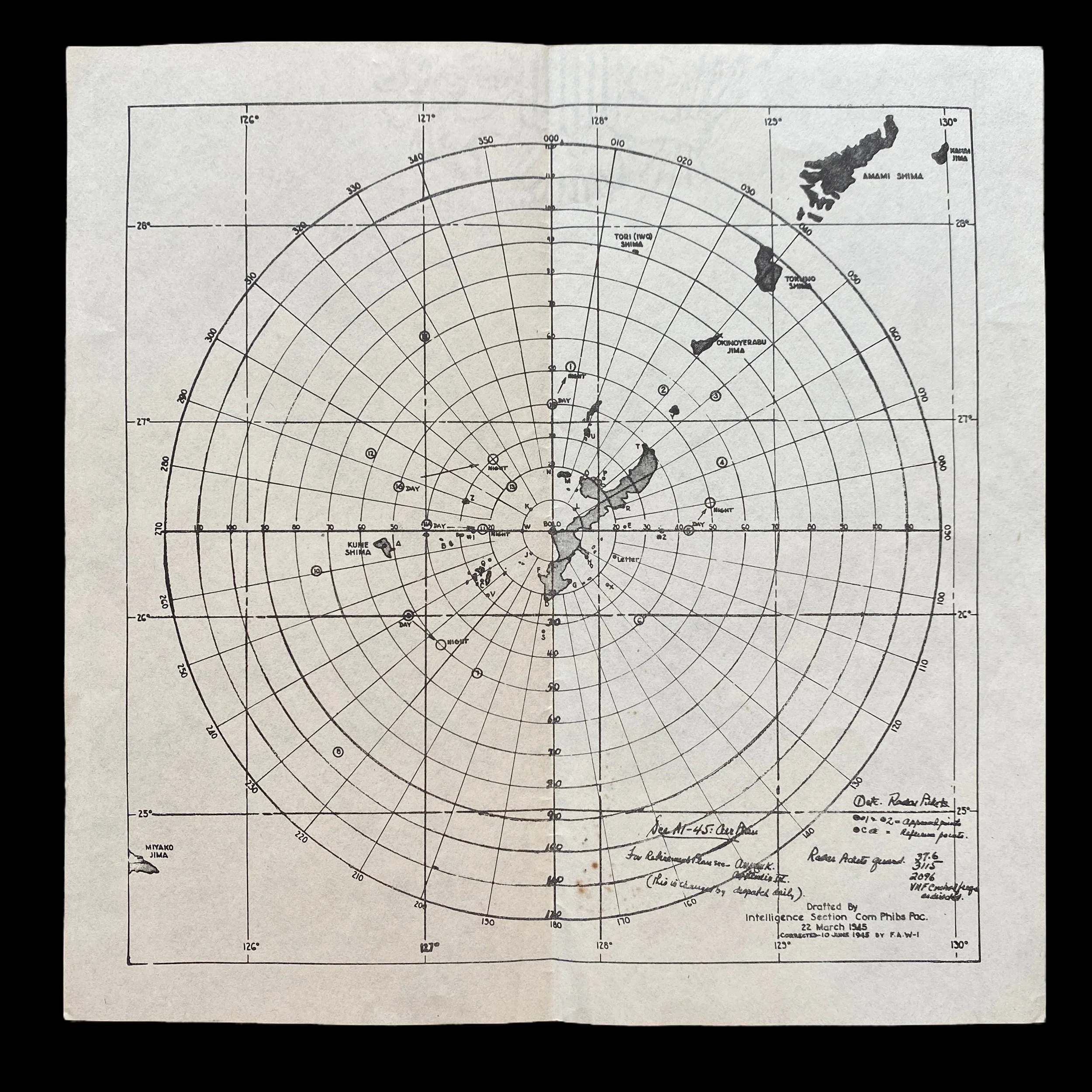RARE! WWII 1945 Battle of Okinawa Operation Iceberg Navy Pilot “THEATER PRINTED” Combat Assault Navigation Map




















RARE! WWII 1945 Battle of Okinawa Operation Iceberg Navy Pilot “THEATER PRINTED” Combat Assault Navigation Map
Comes with hand-signed C.O.A.
This incredibly rare and museum-grade WWII 1945 dated “THEATER PRINTED” air map was used by Navy and Air (pilots) during the air and navy assaults during the Battle of Okinawa (Operation Iceberg). This map was drafted by the “INTELLIGENCE SECTIONS COM. PHIBS POC.” and is updated with the most accurate combat information of Okinawa as of March 22nd, 1945. This air map was printed one month before the initial D-Day assault of Okinawa in April 1945. This map shows ALL of the D-Day landing beachhead as well as all of the Japanese airfield and the famous SHURI LINE.
In all, the US Army had over 103,000 soldiers (of these, 38,000+ were non-divisional artillery, combat support and HQ troops, with another 9,000 service troops), over 88,000 Marines and 18,000 Navy personnel (mostly Seabees and medical personnel). At the start of the Battle of Okinawa, US Tenth Army had 182,821 personnel under its command. It was planned that Lieutenant General Simon Bolivar Buckner Jr. would report to Vice Admiral Richmond K. Turner until the amphibious phase was completed, after which he would report directly to Admiral Raymond A. Spruance. Total aircraft in the American Navy, Marine and Army Air Force exceeded 3000 over the course of the battle, including fighters, attack aircraft, scout planes, bombers and dive-bombers. The invasion was supported by a fleet consisting of 18 battleships, 27 cruisers, 177 destroyers/destroyer escorts, 39 aircraft carriers (11 fleet carriers, 6 light carriers and 22 escort carriers) and various support and troop transport ships.
The Battle of Okinawa (April 1, 1945-June 22, 1945) was the last major battle of World War II, and one of the bloodiest. On April 1, 1945—Easter Sunday—the Navy’s Fifth Fleet and more than 180,000 U.S. Army and U.S. Marine Corps troops descended on the Pacific island of Okinawa for a final push towards Japan. The invasion was part of Operation Iceberg, a complex plan to invade and occupy the Ryukyu Islands, including Okinawa. Though it resulted in an Allied victory, kamikaze fighters, rainy weather and fierce fighting on land, sea and air led to a large death toll on both sides.